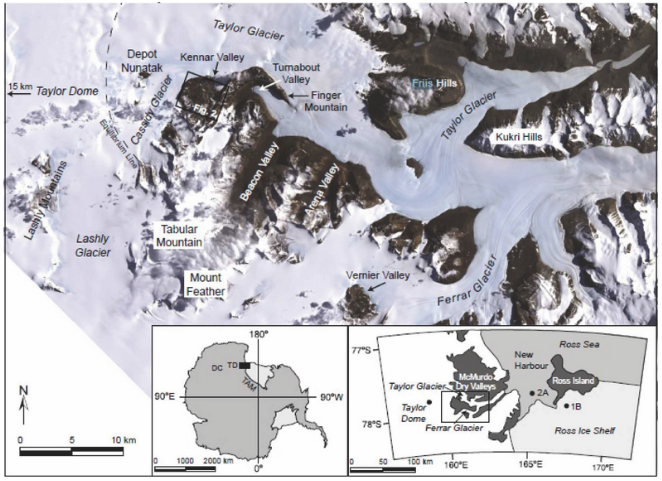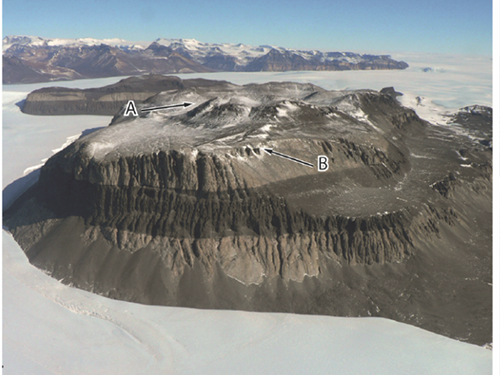- Acronym
- Friis Hills
- Code
- PNRA16_00184-B
- Anno
- 2016
- Research area
- Earth science
- Specific research topic
- Climatic variations and glacial dynamics of the Antarctic continent
- Region of interest
- Dry Valley Antartide
- PI
- Fabio Florindo
- PI establishment
- INGV
- Institutional website
- https://www.ingv.it/
- Other institutions and subjects involved
- Consistency of the research team
- Project status
- Completed
- Main stations used
- Basi Straniere
- The project
The interval between the Lower and Middle Miocene is extremely important for the study of Antarctic ice sheet vulnerability and paleoclimate. Ocean circulation patterns in the Southern Hemisphere were similar to current conditions, and (reconstructed) atmospheric CO2 concentrations were similar to published estimates for the next few decades. New geologic records obtained near the Antarctic ice sheet are critical in order to study the response of the ice sheet to climate variability during this time interval. Data from boreholes along the coast or at sea, obtained as part of the ANDRILL and IODP projects, provide information on the variability of the ice sheet along and beyond the coastal margin but give no information on the extent of inland retreat. Additional data from the interior of the continent are therefore needed to define the extent of variability and to constrain numerical models. The only well-dated continental deposits in Antarctica that have a record of
climatic variations and subsequent fluctuations in the polar ice sheet during this age interval are at Friis Hills in Taylor Valley, one of the "Dry Valleys" west of McMurdo Sound, about 100 km inland. These sediments contain a record of numerous glacial-interglacial cycles. Paleoecology of fossils contained in some fossil layers related to "non-glacial" intervals clearly show that average summer temperatures were 6-7°C. Sedimentary deposits are well preserved in a shallow valley with the oldest layers exposed along some peripheral sectors at erosional contacts. Stratigraphic sections of modest thickness, less than 13 meters, outcrop at these sectors. The thickness of the composite stratigraphic sequence is about 34 meters but with the inherent uncertainties associated with the correlation of short stratigraphic sections that are far apart. New seismic data acquired in the center of the basin in 2014 revealed a continental sedimentary sequence about 50 meters thick. In this research we aim to drill and study this sedimentary sequence using a drilling system
transportable by helicopter. Some tephra horizons outcrop in the Friis Hills area and we expect to encounter these markers in the drilled sequences. The newly acquired data will be compared with coeval records from marine cores with the aim of providing environmental data in a broad onshore-offshore transect.
- Images
-
- Motivation, importance of research
- Objectives of the proposal
- Activities carried out and results achieved
- Products

